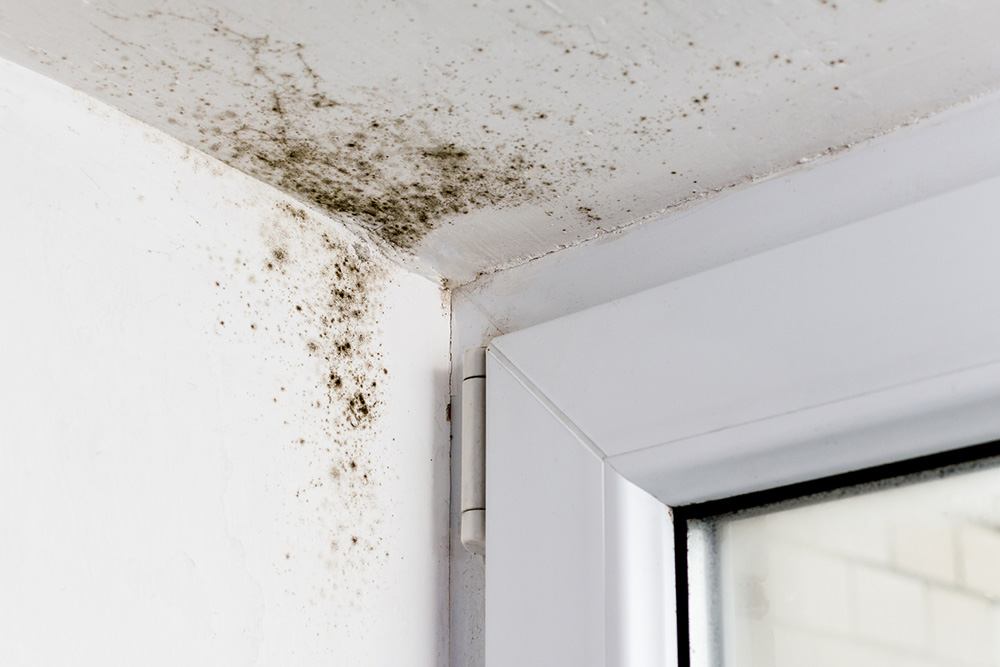Damp and mould

What is condensation?
Condensation can happen from everyday living, such as cooking or having a shower. The moisture will remain in the air but as the room temperature drops, the ability for air to hold moisture reduces and the air becomes saturated. This leads to water droplets forming as condensation.

How to avoid condensation in your home.
Cooking: when cooking try to reduce the amount of moisture by cooking with lids on pans.
Bathing: when running the bath, run the cold water first, then add the hot, it will reduce the amount of steam produced. Open a window or use the extractor fan if you have one.
Washing clothes: put washing outdoors to dry if you can, if this isn’t possible, place in the bathroom with the door closed and the window open or extractor fan on. Try not to dry clothes on radiators as the moisture will stay in the room and condense on other surfaces.

What is mould?
Mould is a fungus that grows on wet materials, and it needs moisture for growth. Mould can come in a variety of colours: black, green, brown, grey and white. It can be hard to know what the type of mould is by the colour.
Mould is caused by damp; it can come from condensation, but it may be something more serious.
What is damp?
Damp is where there’s an excess of moisture in a room. Condensation is the most common cause of damp, however it’s not the only cause.
Damp can be caused by:
• Leaking pipes, waste pipes and drains
• Rain seeping through damaged roof tiles, from a blocked gutter or around window frames
• Rising damp at the bottom of a wall due to a defective damp course
• Penetrating damp around windows or external walls.
Early signs of damp might be a musty smell, but you may also see dark or discoloured patches on walls or plaster, rotting woodwork or the appearance of mould or mildew on walls, floors or ceilings.
If you have signs of damp, please contact us as soon as possible and we’ll investigate as a matter of urgency.
Call us on 0151 290 7000 or fill in our contact form here.
Download our damp and mould leaflet below.

What will we do?
If you think you have mould but not sure what it looks like, then here is an example.
It can be found anywhere, on furniture, walls, windows but generally in areas where air can’t freely flow like the back of wardrobes and in corners of the room.
Once you contact us we’ll be sure to send a member of our team round within 7 days to take a look, document it, and if we can treat it on the day we will. If we can’t we’ll report it as a matter urgency and fix the problem within 28 days.
We’ll make sure we keep you fully informed along the way and if you have any problems you can get in touch with us.

Reporting a new damp or mould repair
-
You get in touch to report damp or mould for the first time.
-
We will arrange and urgent appointment to assess the issue – within 7 days.
-
If the issue is in 1 room or area we will clean and treat the damp or mould.
-
If the home needs more improvement work because of damp or mould we will address this within 28 days.
Reporting reoccurring damp or mould repair
-
You report damp and mould that has returned after we have treated the area or room. We will visit your home to assess any further work needed and make sure the work is carried out within 28 days.
-
Call 30 days after the work has been completed to make sure the damp or mould hasn’t come back.
-
If at any point a Livv Housing Group representative has reason to believe that the damp or mould in the home is having a negative impact on your health we will immediately offer a temporary place to stay while we carry out the repair work needed.


